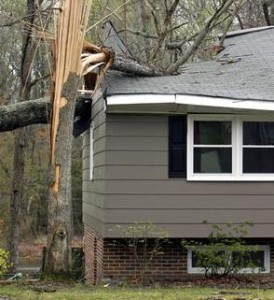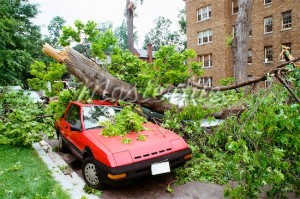As we enter the summer months, the daily rainfall in Central Florida around 3:00pm is inevitable. Sometimes these summer rainstorms can bring with them high winds, and with that comes the possible danger of toppling trees. In 2010, severe storms caused more than $12 million in U.S. property damage. Although there are no specific statistics on how much of that was caused by falling trees, they are a frequent source of damage to homes, cars, power lines, and more.
Trees obviously provide significant benefits to our homes and cities, but when they fall and injure people or damage property, they can be liabilities. While every tree has the potential to fall, only a small number actually hit someone or something. When they do, the first thing to do is obviously make sure everyone is okay. Then, if there’s damage, call the insurance company. In cases where your tree has landed on a neighbor’s or someone else’s property, it will be up to them to call their own insurance company since it will be on their policy. A common misconception about insurance coverage is who is responsible if your tree comes down on your neighbor’s house during a storm. It’s the neighbor, under standard homeowners policies.
We usually think of trees biologically, but we should also consider them as structural items and be aware of any weaknesses that could cause them to fall. A tree can look perfectly healthy to the untrained eye and yet still have weakened or cracked limbs, beam cracks, compromised root systems, or any of a dozen other things that a certified arborist would be able to see. Damage caused by storms or rotting inside can both be reasons why they become hazardous, especially the older the tree is.
If it’s a tree on your property, there are things you can do to help ensure that your tree isn’t the one being a liability! It’s each owners’ responsibility to provide for the safety of trees on his or her property, especially when they have the capability to cause damage to third parties. Regular tree care will help identify hazardous trees and the risks they present. If you think a tree in your yard may be hazardous or if you see what you think may be a defect, you can have your tree examined by an ISA Certified Arborist. For a list of ISA Certified Arborists in your area, please visit www.treesaregood.com. If you have any other questions, click here or call John Madison Landscape at 407-935-9151.



0 Comments